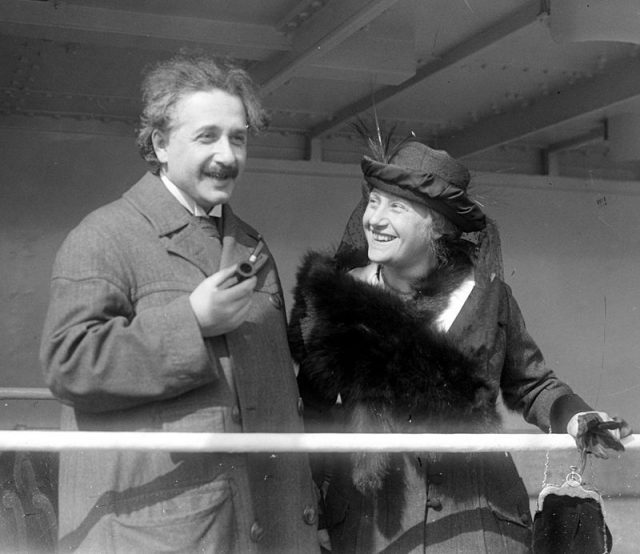The type of aneurysm that Einstein had is statistically linked with being old and male. However, the majority of people developing an AAA also have a history of smoking. Only lung cancer is more closely associated to smoking among tobacco-related diseases. In an analysis of risk factors for AAAs in more than three million individuals, 80% of people who developed the aneurysm were smokers. Another systematic study found that current smokers were 7.6 times more likely to have an AAA than nonsmokers. The aneurysm’s prevalence and size are strongly linked to the amount of smoking one does, and Einstein was a heavy pipe smoker for decades.
Einstein’s doctors ordered him to stop smoking during his various illnesses. He sporadically obeyed. When friends gave him gifts of tobacco during these brief periods of abstinence, Einstein would open the gift, sniff to enjoy the aroma, and then give it away to someone else. But Einstein always succumbed to the overwhelming temptation of his beloved vice. He often resorted to taking tobacco handouts from friends. Dr. Plesch especially felt sorry for the needy, embarrassed Einstein and provided him with a steady supply of tobacco and cigars despite the orders of Einstein’s other doctors and second wife, Elsa.
During his doctors’ smoking bans, when Einstein walked to the Institute for Advanced Study at Princeton, where he had worked since 1933, the old physicist picked up cigarette butts from the street and filled his pipe with bits of discarded tobacco. He initially walked to the Institute across from the nearby meadow, but he switched routes because the street offered more abandoned tobacco. Einstein tried to summon the courage to openly defy the bans, but he worried about offending his doctors.

No comments:
Post a Comment